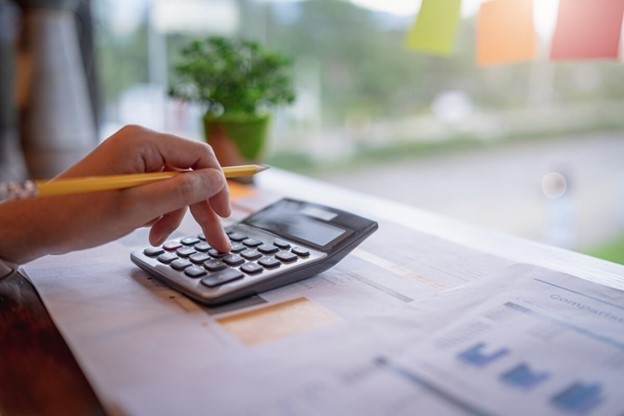
Setting the right rental price for your property can be a tricky balancing act. Charge too much, and you risk driving away potential tenants or dealing with a vacant property for extended periods. Charge too little, and you might miss out on valuable income and return on investment. Landlords and property managers, especially those new to the game, often wonder, "How much should I charge for rent?" and "What's the sweet spot for my location and type of property?"
Here's your guide to ensuring you maximize your revenue while being competitive in the market.
How Much Rent Should I Charge
Ultimately, there is no “one size fits all” formula for how to set your rental price, but understanding the factors surrounding market demand, analyzing the current desirability of similar properties, and utilizing an online rent estimator is a good start.
If you’ve had your home for a long time or you inherited it, you may not be aware of its current value. If this is the case, get a home appraiser to assess your property and give you an idea of what it is worth in the current market and in its current condition.
Once you know the home’s value, figure out your expenses, such as the mortgage payment, property maintenance (both routine maintenance and larger repairs), HOA fees, taxes, and so on. After paying all of those expenses, you’ll want to make an additional amount in profit. This compensates you for your time and allows you to invest in other rental properties, if you choose to. A general rule of thumb when determining rent is to take the property’s value and multiply it by two percent. While this is a good way to get a ballpark amount, it doesn’t take into account a wide variety of factors you’ll want to consider.
Understand Market Demand and Trends
Local market conditions play a significant role in determining rental prices. If you are in a hot rental market, the available rental homes will be snapped up quickly, causing the stock of rentals to be low. If this is the case in your area, you may be able to charge more in rent. Be sure to check the market conditions as you determine your rent. On the flip side, if there's higher vacancy than there is demand, you might need to lower your rent to be competitive against other properties.
Changes in local amenities or job growth can also affect your rental price. Let's say a new shopping center opens nearby, or a big company moves into town and starts hiring. These factors can make your area more desirable, so you might be able to increase your rent. But again, the opposite is also true. If local businesses are closing or jobs are leaving, your area might not be as coveted for renters as it used to be.
Lastly, don't forget about seasonality. Rental demand can go up and down depending on the time of year. For example, the summer months are prime moving season, meaning there’s more competition for rentals, and you could get a higher rate by renting in the summer than you could in the fall or winter.
Analyze Comparable Properties
Real estate wisdom says there's no better indicator of your property's rental value than what tenants are willing to pay for similar offerings nearby. This means researching and comparing your property to others in the local market.
Always compare apples to apples — in other words, don’t compare your rental with those in another state or even in a different neighborhood. Rent prices can vary wildly depending on location, square footage, and the number of bedrooms and bathrooms a rental has. Similar rentals in your area are the homes you’ll be competing with, so it’s a good idea to scope them out. This will require research, but if you have Apartments.com Rental Tools, you have access to a rent comparables report that will do most of the research for you.
To find the rent comparable report, visit your Properties Overview page. If you click the Menu icon, you’ll see an option for Rent Comps. When you download the report, you’ll find a summary of the active listings in your area, how long those listings have been on the market, and the current market conditions. The report also lists important information like school ratings, the neighborhood walk score, and the number of days each rental has been on the market. You’ll be able to save the report as a PDF and print it out.
The rent range and the average rent will help you determine if the rent you are considering will be competitive. You’ll see addresses for comparable rentals (those similar in square footage, number of bedrooms, and number of bathrooms to yours) so you can look them up on Apartments.com to view their photos and read about their features and amenities, giving you a clear picture of how your rental stacks up in comparison.
The rent comparables report will help you better understand the market and see where your property falls in relation to other area rentals, helping you make an informed decision about your rental rate. Even if you are comfortable with your rent price, seeing the market trends will provide you with valuable information that may inform other decisions you’ll be making as a landlord, such as whether or not certain renovations are worth the investment.
It's a good idea to run this report once a year to be sure you are setting a competitive rental rate, especially if your tenant is moving out or you are considering raising the rent. The report auto-updates daily, so you know you’re getting the most accurate information no matter when you run the report. Analyzing these numbers and pricing your rental accordingly is your best bet to set a fair but competitive rent price.
Consider Property Condition and Amenities
Once you know the rates of similar rentals in the area, it’s time to adjust your rent price based on the condition and offerings of your property. The state of your unit directly influences the rental price. Renovated and well-maintained units will naturally allow for higher prices. Amenities such as in-unit laundry, a pool, or fitness center can also justify a premium in your rental price.
Location, size, type, and age are huge factors in adjusting your rent price:
Location
Dating all the way back to 1926, the cliché “location, location, location” has endured as a real estate mantra for good reason. A great location is a major factor in a property’s desirability. If your rental is in the heart of the city’s trendiest, most sought-after neighborhood, you’ll be able to get more in rent than you could in a less popular neighborhood.
Another factor to consider in regard to location is whether or not your area is rent controlled. Rent control is a government-mandated cap on the amount you can charge for rent. If you’re not sure about the laws in your state, be sure to do your research before setting a rent price.
You can also check HUD’s fair market rents to gain a better understanding of your city’s and county’s rent prices. These numbers are updated yearly, giving you a good understanding of how rents have changed over time. You can also get the most current rent prices on Apartments.com.
Type
There’s a wide variety of rental properties out there: single-family homes, multi-family buildings, condos, lofts, duplexes, and townhomes. The rent will vary depending on the type of home you have. For example, a single-family house will probably rent for more than a unit in a duplex.
Size
The square footage, as well as the number of bedrooms and bathrooms, will play a large role in determining your rent. If you have a 900-square-foot cottage, it won’t rent for the same amount as a 1,800-square-foot house, even if they are located next door to each other.
Age
Consider the age of the rental and when it was last renovated as you determine your rent price. If your home is historic, and especially if it is in a historic district, the age of the home could add to the value and you could get more in rent. However, if your home is older and has suffered some wear and tear over the years, its value could be diminished.
Stay Current with Economic Factors
Inflation and interest rates can affect your costs as a landlord, which in turn can influence your pricing strategy. Monitoring these factors is key to adjusting your rental prices periodically. A stagnant price in a rising market may indicate lost income potential.
Additionally, increased interest rates might make it harder for renters to afford a mortgage, potentially elongating the average tenant stay and boosting rental demand, which are factors to consider when determining rent.
Budget for Maintenance and Utilities
When you're figuring out how much to charge for rent, you can't forget about the costs of maintenance and utilities. These are expenses you'll need to cover as a landlord, and they can significantly impact your bottom line. So, how much should you budget for maintenance? Experts suggest maintenance will cost around 1% of your property’s value each year and recommend setting aside 50% of all rental income to budget for these expenses.
Utilities are another big consideration. These can vary widely depending on where your property is located and the size of the property. If you include a tenant’s utilities as a flat rate in their rent, try to estimate how much water, gas, electricity, and trash will cost over a year and adjust rent accordingly.
Conclusion
There is not a strict formula for setting rent prices. By analyzing the local market, leveraging digital tools, considering the condition and amenities of your property, and staying within legal norms, you can set rent prices that are appropriate for your market while still maximizing your income potential. Remember to review and adjust your pricing strategy regularly to keep up with market changes and ensure your rental investment remains as profitable as possible. Keep these factors in mind, and you'll be well on your way to being a successful landlord.
Frequently Asked Questions
1. What are the risks of setting rent too high or too low?
Setting rent too high can lead to longer vacancies, while setting it too low may reduce your return on investment. Striking the right balance ensures you attract tenants while maximizing your rental income.
2. Can I increase rent for existing tenants?
Yes, but it’s essential to follow local laws and provide proper notice. Consider the market rate, tenant satisfaction, and lease terms before deciding on a rent increase.
3. Should I adjust rent based on the season?
Yes, rental demand often fluctuates with the seasons. For example, summer months typically see higher demand due to families moving before the school year. Adjusting your rent slightly during peak seasons can help you secure tenants faster.











